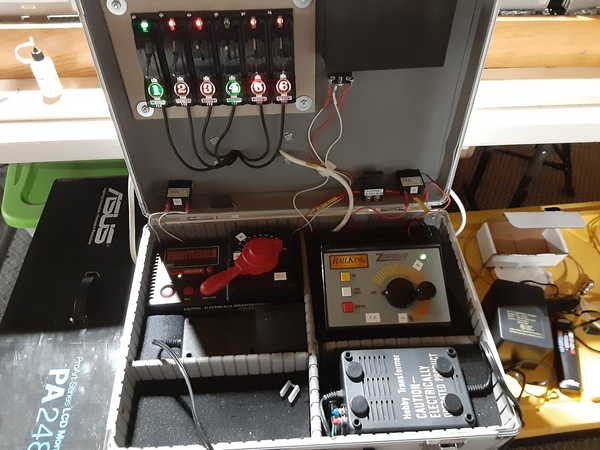For this suitcase control panel that operates two loops on a 4 x 8 the inside loop power pack doesn't seem to provide enough amps for a Lion Chief + 2.0 and similar. The engines will sometimes not move forward or backward when stopped. Moving them to a track powered with an MTH Z-1000 solves the problem.
I was wondering if the existing power pack can be substituted much in the way that the MTH Z-750 and Z-1000 have the same head unit with different power packs.

Purportedly 80 Watts (doubtful). Here it is installed in the portable control panel on the left side.
That open space in the front is needed for the toggle handles of the Fastrack switches when the case is closed so I am not sure I can even squeeze say a Z-750 power pack in where the MRC small power pack is located although I don't know what size the Z-750 power pack actually is. I might be able to move the gray divider forward a bit to get a little larger power pack in.
But first is this doable. Can I substitute a bigger power pack?
Thanks,
John




